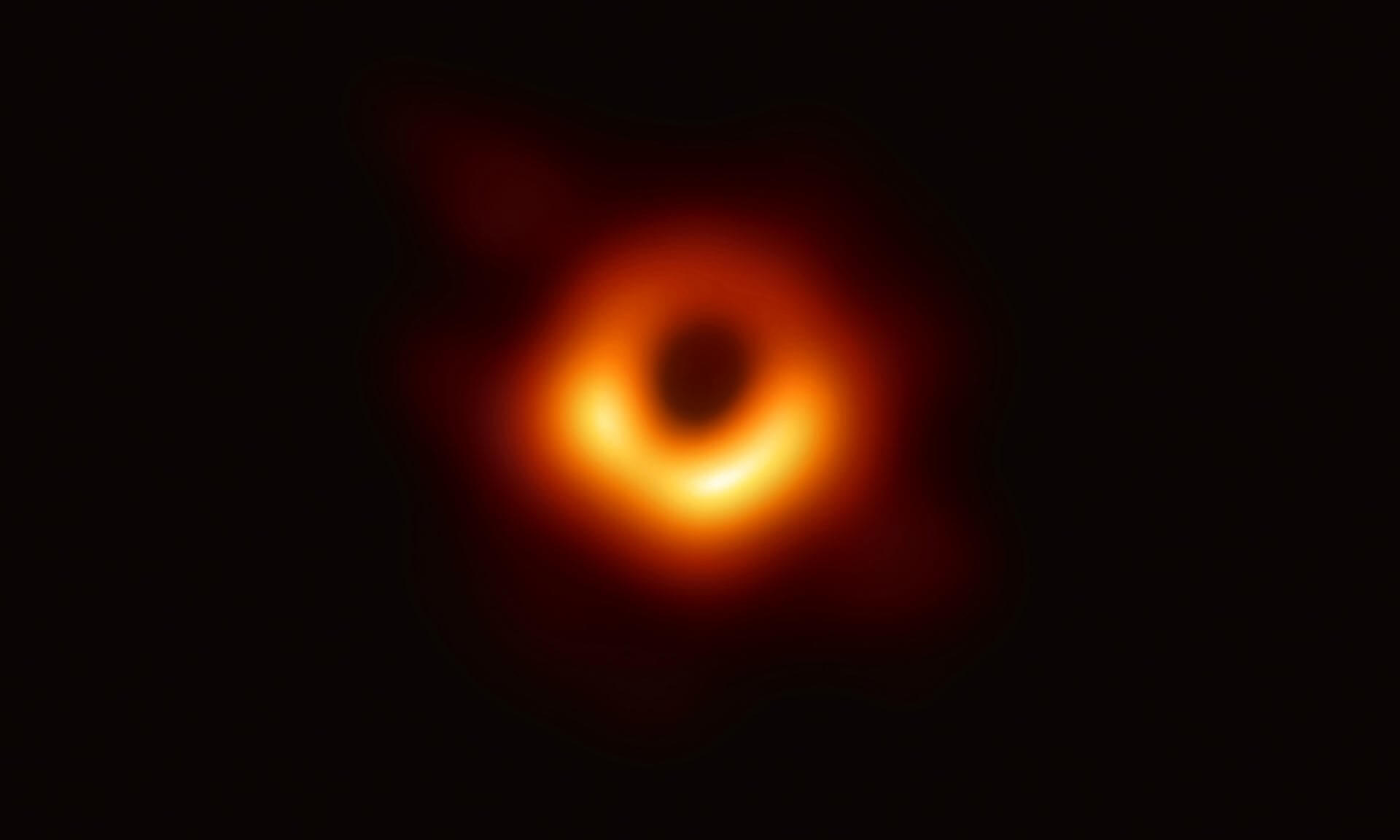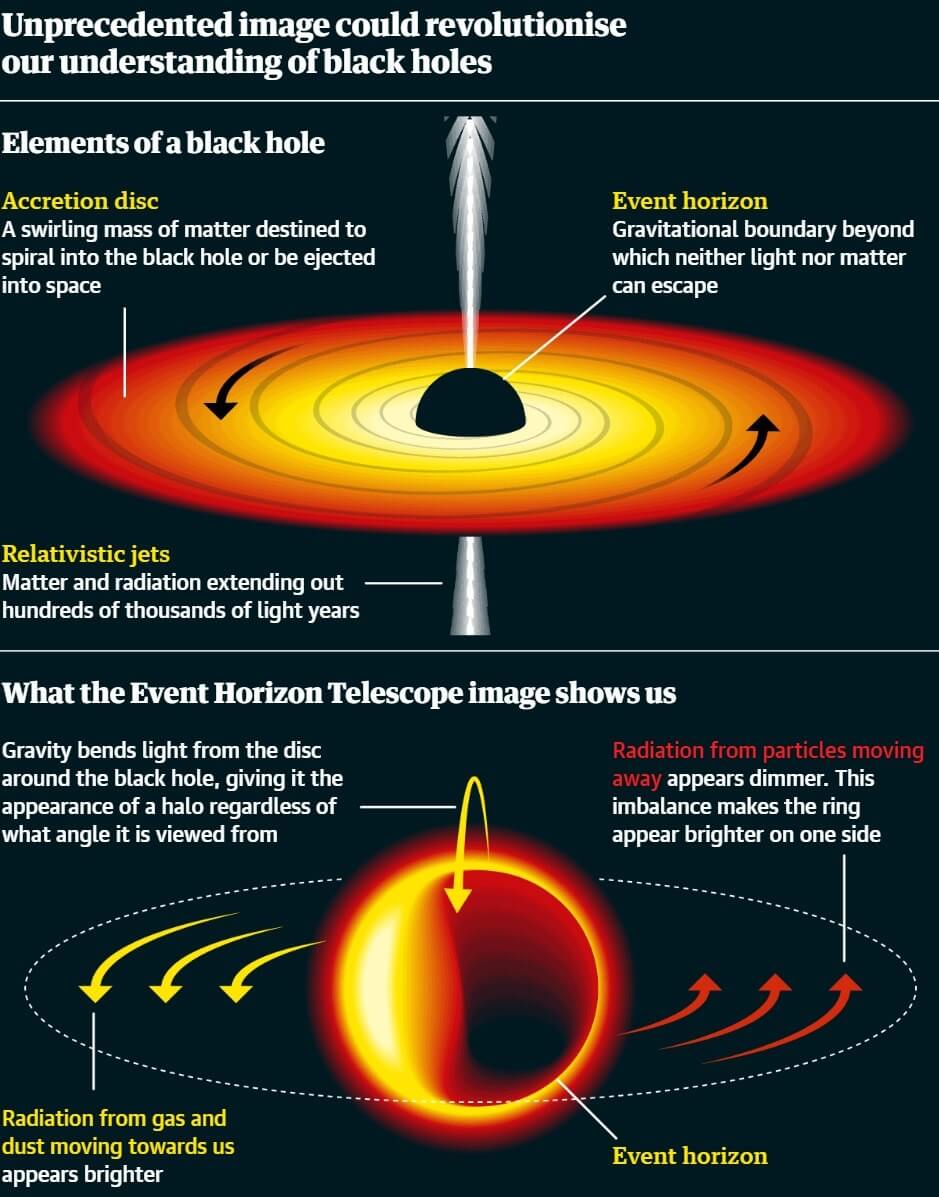What just happened? The first-ever image of a black hole has been revealed by astronomers. The picture shows the dust and gas halo surrounding the enormous object, which is 6.5 billion times more massive than our sun.

The supermassive black hole is located at the center of the Messier 87 galaxy, which is 55 million light years from Earth. The image was captured by the Event Horizon Telescope (EHT), which is made up of eight radio telescopes placed across five continents, and was revealed by researchers at a press conference earlier today. A conventional telescope would have had to be the size of earth to take this picture.
“Scientists have obtained the first image of a black hole, using Event Horizon Telescope observations of the center of the galaxy M87,” the Event Horizon Project (EHT) said in a statement. “The image shows a bright ring formed as light bends in the intense gravity around a black hole.”
The image shows the black hole’s accretion disk, a donut-shaped ring of gas and dust that gets swallowed by the hole. EHT detects radiation emitted by particles within the disk that are heated to billions of degrees as they swirl around the phenomenon at close to the speed of light, reports The Guardian.
Image credit: The Guardian
The observations took place across one week in 2017 and were coordinated using atomic clocks accurate to within one second every 100 million years. The amount of data gathered is enormous—just one night can produce as much as a year’s worth of experiments at The Large Hadron Collider. The information was recorded onto discs and physically sent out to be analyzed by a supercomputer for months.
To compliment these findings, several @NASA spacecraft were part of large effort to observe the #EHTBlackHole using different wavelengths of light. Take a look at perspectives from @ChandraXray, @NASASwift, @NASANuSTAR and others: https://t.co/TAToEY4re0 #BlackHole pic.twitter.com/Qt6rmgwMFd
— Thomas Zurbuchen (@Dr_ThomasZ) 10 April 2019
“We are giving humanity its first view of a black hole — a one-way door out of our universe,” said Sheperd Doeleman of the Haystack Observatory at the Massachusetts Institute of Technology (MIT) who is the EHT’s lead astronomer. “This is a landmark in astronomy, an unprecedented scientific feat accomplished by a team of more than 200 researchers.”
https://www.techspot.com/news/79595-first-ever-image-black-hole-has-released.html
